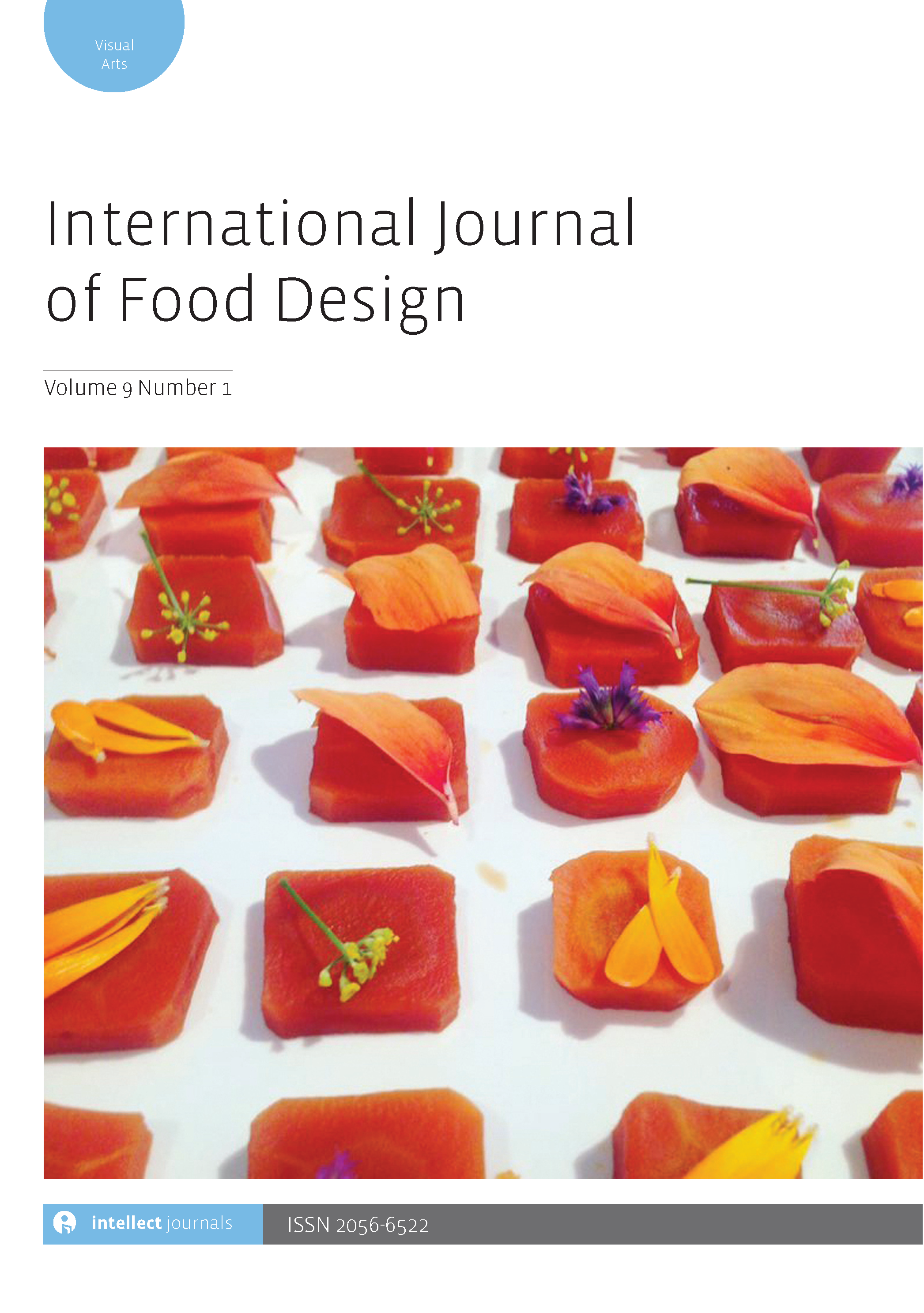-
oa Participatory Research through Gastronomy Design: A designerly move towards more playful gastronomy
- Source: International Journal of Food Design, Volume 4, Issue 1, Apr 2019, p. 3 - 37
-
- 01 Apr 2019
- Previous Article
- Table of Contents
- Next Article
Abstract
Socialization, eating and play are core activities that make us human. While they are often brought together, play theory suggests that their combination has unexplored potential in the context of gastronomy. Our research also indicates that a chef’s desire to control the meal may be a key impediment to developing dining experiences in which the diner’s playful engagement impacts taste, texture and flavour combination. We investigate if combining participatory research through design and play theory might better situate chefs to diversify their approach to playful gastronomy. Using experimental design methods, we interviewed a chef, a maître d’, a professional gastronomist, two food enthusiasts and a novice, to identify overlooked opportunities to extend play in gastronomy. We then conducted a series of dinners – designed with and for experts, enthusiasts and novices – to explore these opportunities, and tested the resulting method through a workshop with student chefs and game designers. We present the method: Participatory Research through Gastronomy Design (PRGD), using the case of its development to explicate its characteristics. Our research suggests that PRGD supports the design of playful gastronomic experiences that appeal to a range of diners, affords exploration of play’s impact on social dynamics and can productively inform concrete design choices. It also – crucially – supports chefs to partially transfer control of how a meal unfolds, without diluting their sense of controlling the overall experience. PRGD thus addresses a key impediment to extending play in gastronomy. Gastronomy that responds to diners’ needs and desires for play are currently limited. We propose PRGD as an exciting – and viable – approach to address this limitation.



